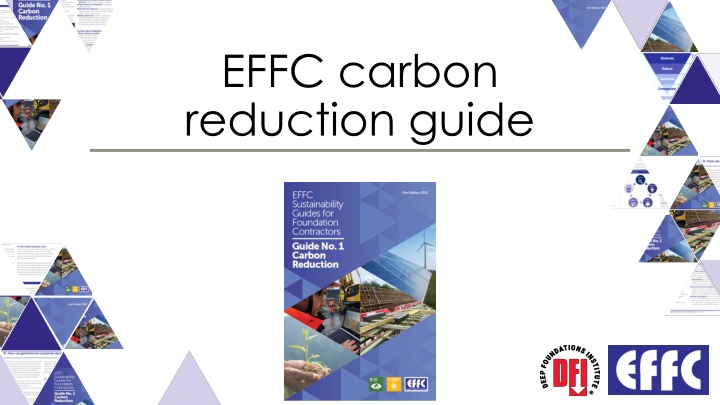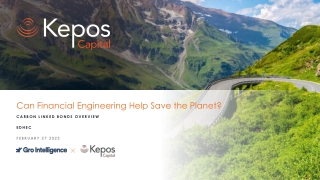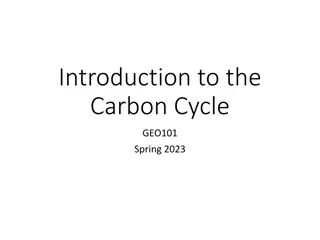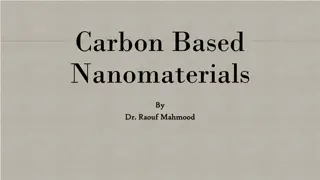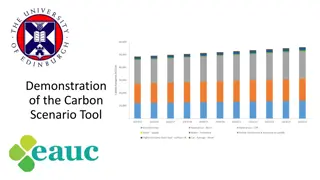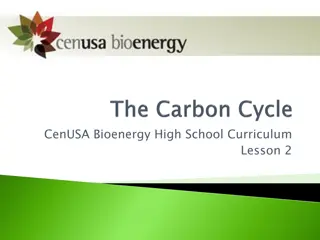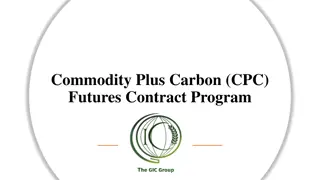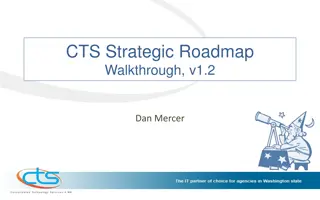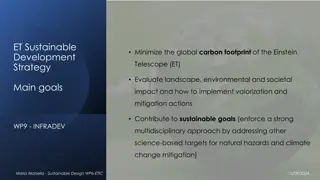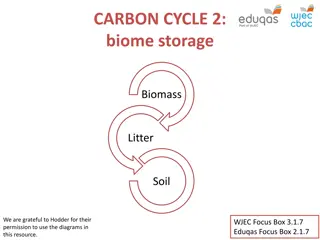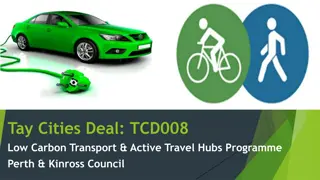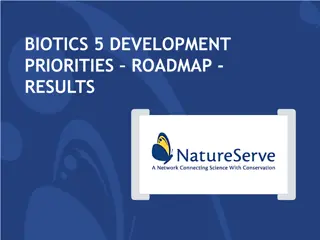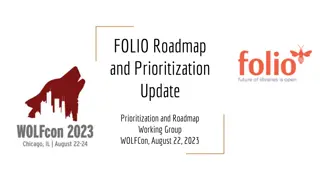Sustainable Construction Initiatives in Europe: A Roadmap to Carbon Reduction
European Federation of Foundation Contractors (EFFC) and Deep Foundations Institute (DFI) are leading the way in promoting sustainable practices within the construction industry. Through collaborative efforts, these organizations aim to reduce carbon emissions and establish sustainable development goals. The initiatives focus on educating geotechnical companies on the importance of sustainability, addressing global emissions impact, and advocating for environmentally friendly construction practices.
Download Presentation

Please find below an Image/Link to download the presentation.
The content on the website is provided AS IS for your information and personal use only. It may not be sold, licensed, or shared on other websites without obtaining consent from the author.If you encounter any issues during the download, it is possible that the publisher has removed the file from their server.
You are allowed to download the files provided on this website for personal or commercial use, subject to the condition that they are used lawfully. All files are the property of their respective owners.
The content on the website is provided AS IS for your information and personal use only. It may not be sold, licensed, or shared on other websites without obtaining consent from the author.
E N D
Presentation Transcript
EFFC carbon reduction guide
EFFC introduction The European Federation of Foundation Contractors represents 16 European National Federations across Europe. the EFFC represents more than 370 companies across Europe that undertake foundation construction and geotechnical processes; Including piling, diaphragm walling, grouting, ground anchoring, ground improvements and dewatering. The Sustainability working group drafted the roadmap for our industry s contribution to a sustainable future. In order to produce hands-on how-to guides the working group joined forces with the DFI sustainability committee
Deep Foundation Institute Introduction Deep Foundations Institute is an international association of contractors, engineers, manufacturers, suppliers, academics and owners in the deep foundations industry. Our multidisciplinary membership creates a consensus voice and a common vision for continual improvement in the planning, design and construction of deep foundations and excavation. The aim of the DFI Sustainability Committee is to promote the UN Sustainability Development Goals that apply to deep foundations and excavation projects and help DFI members incorporate and advance sustainable practices
Structure Why? How? Measure What?
What? What is sustainability and the SDGs? What is carbon and climate change? What is the relevance to geotechnical companies?
Sustainability definition Development that meets the needs of the present without compromising the ability of future generations to meet their own needs. (Brundtland, 1987)
Our impact Construction accounts for 11% of global emissions (& impacts 62% indirectly) Foundations account for 15-23% of the average building embodied carbon IEA, 2019 Wrap, 2015 Foundations Roof Doors Frames Ext walls & windows Finishes Upper floors Internal walls M&E
Why? Why should geotechnical companies decarbonise?
Drivers of sustainability Existing: NRMM, ETS, taxation etc Upcoming: taxonomy Minimum requirements Bank pressure Legislation Financial pressure Client demand Investor pressure Value add Drivers Employee demand Efficiency savings Manage risk Transition Physical Adapted from Deamer, 2022
Legislative pressures EU Corporate Sustainability Reporting Directive (CSRD) EU Energy Efficiency Directive EU Taxonomy directive Emissions Trading System Low Emission Zones EU Non-financial reporting directive Carbon Border Adjustment Mechanism NRMM
How? How can geotechnical companies decarbonise? How can each part of the business contribute to carbon reduction?
Carbon reduction cycle Measure Reduction plan Review Offset remaining Report Adapted from FairClimateFund, 2022
Measure emission Scopes Directly within company Keller Annual Report, 2022 Other indirect emissions eg material use Direct emissions eg fuel use Indirect emissions from electricity use
Carbon hierarchy Eliminate emissions completely eg reuse foundations, eliminate steel & cement, video call rather than travel Eliminate Reduce emissions eg reduce number of piles & pile diameter, improve the efficiency of our processes Reduce Substitute emission sources eg low carbon cements, recycled steel / aggregate, offices powered by renewable power Substitute Compensate eg carbon negative solutions, carbon offsetting ( carbon credits ) Compensate Adapted from IEMA
Key ways to decarbonise Key ways to decarbonise materials Key ways to decarbonise procurement Key quick wins Key ways to decarbonise transport Key ways to decarbonise electricity use Key ways to decarbonise a site Key ways to reduce the whole- life carbon of an asset Key ways to improve a carbon mature business Possible project and company accreditations
Examples of quick wins Reduce waste and reuse materials eg sheet piles, steel screw piles, demolition rubble as aggregate, or reuse old foundations Reduce cement use Design cement-free ground improvement solutions and specify low Ordinary Portland Cement mixes Reduce overconsumption of fuel and materials by efficient use of equipment, and optimising designs. Education and awareness of site teams on energy efficiency; educate designers on whole life carbon Connect to the electric grid if possible, to reduce use of generators and enable electric equipment Target efficiency improvements when upgrading / replacing equipment
Case study: HS2 C1 Changed grouting cement mix Saved 2015 tCO2e Saved 280k Coarser microfine cement with higher GGBS content Redesigned D-wall to reduce thickness Saved 270 tCO2e Saved 1.34m Stronger cement mix allowed for thinner D-wall Used on-site bentonite recycling Saved 307 tCO2e Saved 195k Savings from less material extracted and transported Used certified HVO biofuel (from waste stocks) on all rigs and equipment Cost 5.8k Saved 97.6 tCO2e Also associated air quality improvement
Measure How can we measure project emissions and reductions? How can we measure company emissions and reductions?
Projects: EFFC-DFI carbon calculator Breakdown project emissions by source (certified ISO 14067, GHG Protocol & PAS 2050) Compare the carbon intensity of different geotechnical solutions for a project (absolute & relative) Company logo Company logo
Company: measurement & targets Help to calculate Scope 1 & 2 emissions (legal requirement), absolute & relative to revenue Advice on target setting and certifications across all Scopes
On the horizon EFFC carbon calculator revision & updates 22 and 23 Upcoming Sustainability guides Guide #2 Circular economy Guide #3 Workforce Attracting, developing & retaining Guide #4 Energy piles Guide #5 Carbon Reporting
